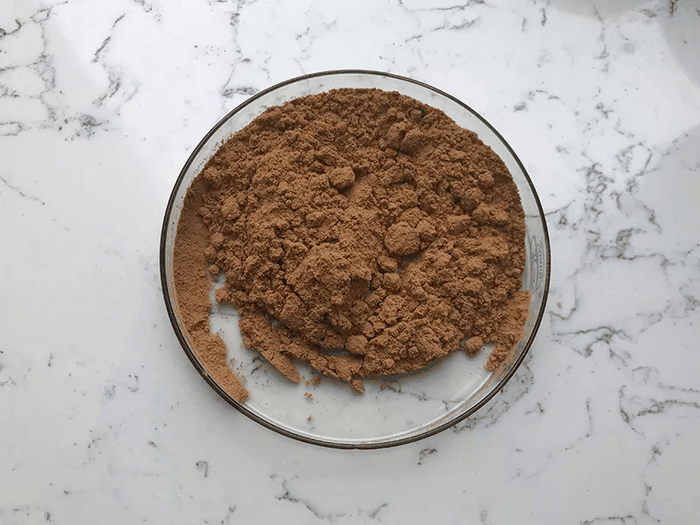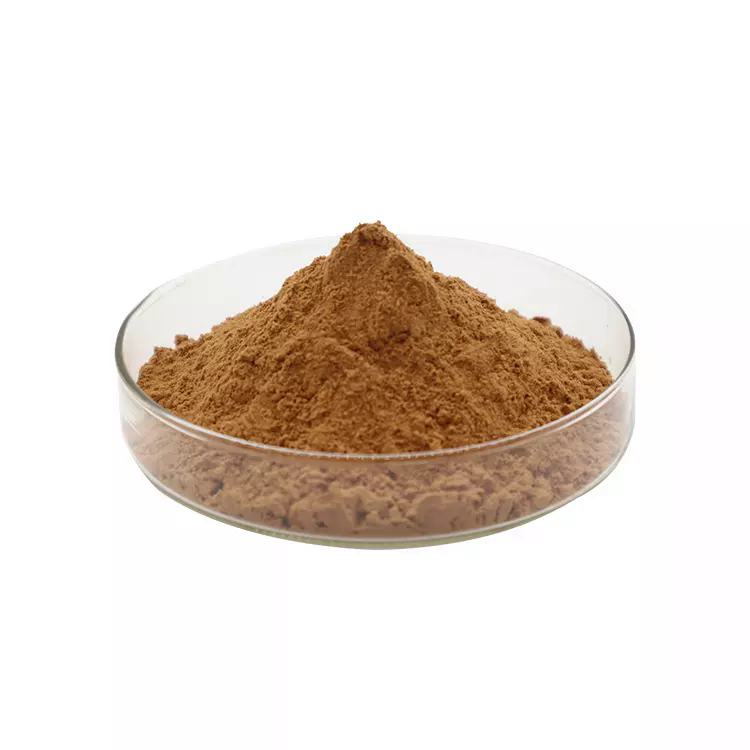Rhodium(III) Chloride
- CAS NO.:10049-07-7
- Empirical Formula: Cl3Rh
- Molecular Weight: 209.26
- MDL number: MFCD00011204
- EINECS: 233-165-4
- SAFETY DATA SHEET (SDS)
- Update Date: 2024-12-18 14:15:30

What is Rhodium(III) Chloride?
Description
Rhodium trichloride is a red-brown or black,odorless solid or liquid. Molecular weight = 209.26; 263.32(trihydrate); Boiling point = 775℃ (sublimes); Freezing/Melting point = 400-500℃(decomposition). HazardIdentification (based on NFPA-704 M Rating System):Health 3, Flammability 0, Reactivity 1. Insoluble in water.Rhodium trichloride trihydrate, RhCl3 - xH2O, is a deep-redcrystalline solid. Soluble in water.
Chemical properties
Rhodium(III) Chloride, also known as rhodium trichloride, is a red-brown or black crystalline powder that is easily deliquescent. poisonous! Molecular weight 209.26 (anhydrous), melting point 450~500°C (decomposition). Boiling point 800°C (sublimation). To 600°C above to generate polyfluoride. It can be reduced by hydrogen at 70°C. Insoluble in water, acid, aqua regia, soluble in methanol and cyanide solution. In concentrated acid (nitric acid, sulfuric acid) heating decomposition. When heated, it can interact with metals such as sodium, aluminum, magnesium, and iron.
Physical properties
Brownish-red powder; deliquescent; decomposes on heating at 450 to 500°C; sublimes at 800°C; insoluble in water, water-solubility, however, depends on the method of preparation; soluble in alkali hydroxide or cyanide solutions; soluble in aqua regia
The trihydrate is a dark red powder; deliquescent; loses water at 100°C; very soluble in water; soluble in alcohol and hydrochloric acid; insoluble in ether.
The Uses of Rhodium(III) Chloride
Rhodium(III) Chloride is used in homogeneous catalysis, for example in the industrial prodcution of acetic acid. It is used to coat optic fibres and optical mirrors, and for crucibles, thermocouple elements and headlight reflectors. manufacture of rhodium trifluoride.
Preparation
Rhodium trichloride is prepared by heating rhodium with chlorine gas at 250°C:
2Rh + 3Cl2 → 2RhCl3
Also, the chloride salt may be obtained by treating the yellow hydrous oxide, Rh2O3.5H2O, with hydrochloric acid. The solution is carefully evaporated to form a dark red and water-soluble salt, rhodium trichloride tetrahydrate, RhCl3.4H2O. Heating the tetrahydrate in a stream of hydrogen chloride gas at 180°C forms the anhydrous salt, RhCl3.
What are the applications of Application
Rhodium(III) chloride precursor may be used to dope graphene with Rh nanoparticles to prepare hybrids for electrocatalysis in energy, sensing and biomedical sectors. It can be used to prepare [Rh(NH3)6]Cl3.
Reactions
Catalyst in conjunction with "pybox" for the asymmetric hydrosilylation of ketones.
C-C bond forming reactions.
Hazard
Toxic by ingestion.
Safety Profile
Poison by ingestion, intraperitoneal, and intravenous routes. Experimental reproductive effects. Questionable carcinogen with experimental carcinogenic data. Mutation data reported. Incompatible with pentacarbonyl iron + zinc. When heated to decomposition it emits toxic fumes of Cl-. See also RHODIUM and CHLORIDES
Potential Exposure
Rhodium trichloride is used in hydrosilylation, hydrogenation, carbonylation, oxidation, arylation. See also “Rhodium Metal.” In plating operations and in catalyst preparation, the metal will be used as the trichloride.
First aid
If this chemical gets into the eyes, remove anycontact lenses at once and irrigate immediately for at least15 min, occasionally lifting upper and lower lids. Seekmedical attention immediately. If this chemical contactsthe skin, remove contaminated clothing and wash immediately with soap and water. Seek medical attention immediately. If this chemical has been inhaled, remove fromexposure, begin rescue breathing (using universal precautions, including resuscitation mask) if breathing hasstopped and CPR if heart action has stopped. Transferpromptly to a medical facility. When this chemical hasbeen swallowed, get medical attention. Give large quantities of water and induce vomiting. Do not make an unconscious person vomit.
storage
Color Code—White: Corrosive or ContactHazard; Store separately in a corrosion-resistant location.Prior to working with this chemical you should be trainedon its proper handling and storage. Store in tightly closedcontainers in a cool, well-ventilated area away from strongoxidizers. Where possible, automatically transfer materialfrom drums or other storage containers to processcontainers.
Shipping
UN3260 Corrosive solid, acidic, inorganic, n.o.s., Hazard class: 8; Labels: 8-Corrosive material, Technical Name Required.
Purification Methods
Probable impurities are KCl and HCl. Wash the chloride well with small volumes of H2O to remove excess KCl and KOH and dissolve it in the minimum volume of conc HCl. Evaporate it to dryness on a steam bath to give wine-red coloured RhCl3.3H2O. Leave it on the steam bath until the odour of HCl is lost-do not try to dry further as it begins to decompose above 100o to the oxide and HCl. It is not soluble in H2O but soluble in alkalis or CN solutions and forms double salts with alkali chlorides. [Anderson & Basolo Inorg Synth VII 214 1963.]
Incompatibilities
Sensitive to humidity. Incompatible with oxidizers (chlorates, nitrates, peroxides, permanganates, perchlorates, chlorine, bromine, fluorine, etc.); contact may cause fires or explosions. Keep away from alkaline materi- als, strong bases, strong acids, oxoacids, and epoxides.
Waste Disposal
Recovery and reclaiming wherever possible in view of high economic value. See “Rhodium Metal.”
Properties of Rhodium(III) Chloride
| Melting point: | 450 °C |
| Boiling point: | 717 °C (730 mmHg) |
| Density | 5.38 |
| storage temp. | Inert atmosphere,Room Temperature |
| solubility | insoluble in H2O; soluble in alkaline solutions |
| form | Powder |
| color | Red-brown |
| Water Solubility | Insoluble in water. Soluble in hydroxide and cyanide solutions. |
| Sensitive | Hygroscopic |
| Merck | 14,8188 |
| Exposure limits | ACGIH: TWA 1 mg/m3 NIOSH: IDLH 100 mg/m3; TWA 0.1 mg/m3 |
| Stability: | hygroscopic |
| InChI | InChI=1S/3ClH.Rh/h3*1H;/q;;;+3/p-3 |
| CAS DataBase Reference | 10049-07-7(CAS DataBase Reference) |
| EPA Substance Registry System | Rhodium trichloride (10049-07-7) |
Safety information for Rhodium(III) Chloride
| Signal word | Warning |
| Pictogram(s) |
 Exclamation Mark Irritant GHS07 |
| GHS Hazard Statements |
H302:Acute toxicity,oral |
Computed Descriptors for Rhodium(III) Chloride
| InChIKey | SONJTKJMTWTJCT-UHFFFAOYSA-K |
| SMILES | [Rh](Cl)(Cl)Cl |
Rhodium(III) Chloride manufacturer
Dhara Industries
New Products
(S)-3-Aminobutanenitrile hydrochloride 4-Methylphenylacetic acid N-Boc-D-alaninol N-BOC-D/L-ALANINOL Tert-butyl bis(2-chloroethyl)carbamate N-octanoyl benzotriazole 3-Morpholino-1-(4-nitrophenyl)-5,6-dihydropyridin- 2(1H)-one Furan-2,5-Dicarboxylic Acid S-2-CHLORO PROPIONIC ACID ETHYL ISOCYANOACETATE 2-Bromo-1,3-Bis(Dimethylamino)Trimethinium Hexafluorophosphate 4-IODO BENZOIC ACID 3-NITRO-2-METHYL ANILINE 1-(2,4-DICHLOROPHENYL) ETHANAMINE (2-Hydroxyphenyl)acetonitrile 4-Bromopyrazole 5,6-Dimethoxyindanone 2-(Cyanocyclohexyl)acetic acid 4-methoxy-3,5-dinitropyridine 1-(4-(aminomethyl)benzyl)urea hydrochloride 2-aminopropyl benzoate hydrochloride diethyl 2-(2-((tertbutoxycarbonyl)amino) ethyl)malonate tert-butyl 4- (ureidomethyl)benzylcarbamate Ethyl-2-chloro((4-methoxyphenyl)hydrazono)acetateRelated products of tetrahydrofuran








You may like
-
 10049-07-7 RHODIUM CHLORIDE 99%View Details
10049-07-7 RHODIUM CHLORIDE 99%View Details
10049-07-7 -
 10049-07-7 99%View Details
10049-07-7 99%View Details
10049-07-7 -
 Rhodium(III) chloride 99%View Details
Rhodium(III) chloride 99%View Details -
 Rhodium (III) chloride solution CAS 10049-07-7View Details
Rhodium (III) chloride solution CAS 10049-07-7View Details
10049-07-7 -
 Rhodium(III) chloride, 98% CAS 10049-07-7View Details
Rhodium(III) chloride, 98% CAS 10049-07-7View Details
10049-07-7 -
 Rhodium(iii) chloride 95% CAS 10049-07-7View Details
Rhodium(iii) chloride 95% CAS 10049-07-7View Details
10049-07-7 -
 Rhodium(III) chloride CAS 10049-07-7View Details
Rhodium(III) chloride CAS 10049-07-7View Details
10049-07-7 -
 118753-70-1 98+View Details
118753-70-1 98+View Details
118753-70-1